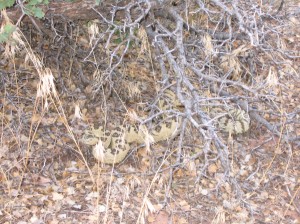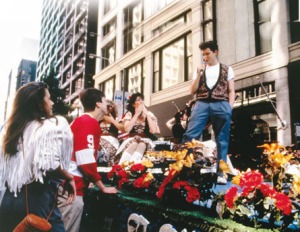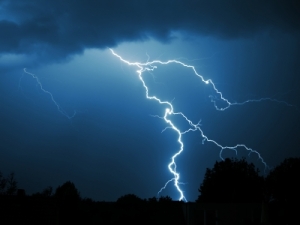 When I took my cross country trip back in 2004, one thing I hadn’t thought about at all while making my plans was the wildlife that I would encounter along the way. I’m a city girl. For me, wildlife is the scary albino possum that slinks around my neighborhood in the middle of the night, or the dragonfly on steroids that attacked me on the Rose Kennedy Greenway a few weeks ago (I swear, it dive-bombed me and it was at least six inches long, with a head the size of a large cherry tomato).
When I took my cross country trip back in 2004, one thing I hadn’t thought about at all while making my plans was the wildlife that I would encounter along the way. I’m a city girl. For me, wildlife is the scary albino possum that slinks around my neighborhood in the middle of the night, or the dragonfly on steroids that attacked me on the Rose Kennedy Greenway a few weeks ago (I swear, it dive-bombed me and it was at least six inches long, with a head the size of a large cherry tomato).
At any rate, the first National Park I visited was Badlands in South Dakota. Sure enough there were buffalo on the road to the campsite, and buffalo hanging around the campsite as well. The sheer size of those animals made me realize that I should probably investigate what wildlife was around so that I would be prepared.
A few days later, I arrived at Yellowstone. I was hours behind schedule (which is a long story for another day), so by the time I arrived at the campsite, it was starting to get dark. I went up to the registration window to check in and get my assignment, and the woman in the little booth spent ten minutes giving me the lecture about how to avoid getting eaten by a Grizzly bear.
I was supposed to avoid food-flavored toiletries and under no condition keep them in my tent. I was absolutely not to store toothpaste or a used toothbrush in my tent, and was to brush and rinse very thoroughly before going to bed to remove any traces of food from my body. I was to eat only at the picnic table, and not in my tent, and for the love of god not have food in my tent, or any beverage other than water, at night (well, I knew that last part). I was to dispose of all trash, including as many crumbs as I could gather, in the bear-safe trash receptacles only. If I had to leave my tent during the night, I was to take a flashlight and make a lot of noise on my way to the restrooms.
Gah! I nearly passed out with fear. But there were a ton of other people around, and so I pretended I was totally cool with all of it and meekly set off to put up my tiny little tent in my assigned area, have dinner, follow all of the instructions, and then lock myself in my tent and be afraid I was about to be Grizzly meal.
I know now — and figured out the next day, after a mostly sleepless night — that I was in the southern part of the park and therefore unlikely to run into Grizzlies, who inhabit areas in the north. Also, once I had had an opportunity to absorb the precautionary measures necessary and adjust to the reality of the chances I had encountering a Grizzly, I stopped panicking and realized it was just like anything else while traveling or hiking or camping: know the risks and minimize them where possible. Or, Rule number 12:
Know What Wildlife You Might Encounter and How to Handle It
Before hiking or camping in an area, research its local wildlife. Are there large mammals that you should keep an eye out for? How do you avoid them or handle them if you do run across them? What about smaller mammals that could be dangerous if provoked or if made aggressive by prior encounters with humans? Poisonous snakes or bugs?
As with anything else, knowledge is power. If you know there are rattlesnakes, you can keep an eye out for them. If you know that black bears are n the area, you can stomp and sing while hiking (television theme songs are good in a pinch) in order to avoid surprising them. And if there are Grizzlies, you can have bear spray handy and be extra careful about food scents while camping.
You might even get a good night’s sleep.












